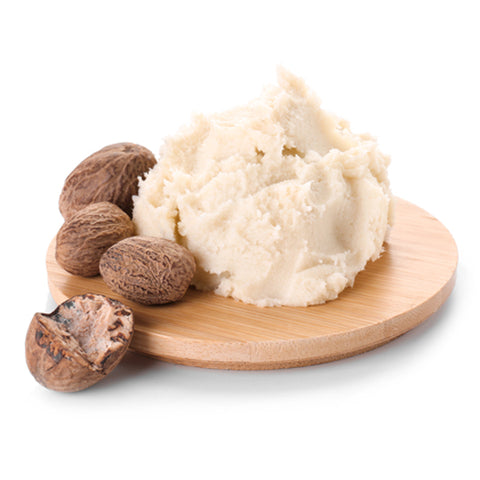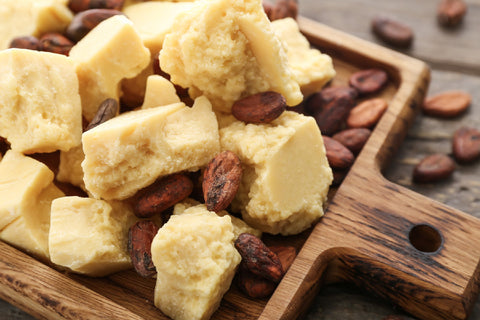Emollients are essential in cosmetic products since they are adaptable compounds that perform many purposes to help these products reach the desired qualities. Emollients are critical to improving the overall quality and appeal of cosmetics. They primarily hydrate and soften the skin, resulting in a smooth texture.

This moisture-retaining feature assists dry or sensitive skin and adds to the products' pleasant and relaxing feel when applied. Emollients also help to protect the skin's natural barrier from external stressors and contaminants. Thus, emollients are essential in the search for effective and fun cosmetic treatments that improve and preserve skin health and beauty.
What Are Emollients?
Emollients are essential components of cosmetic and skincare products. They have distinct characteristics that improve the texture and performance of these items. Their basic functions include hydrating the skin by establishing a protective barrier to decrease moisture loss and softening it, resulting in a smoother feeling.
They can be found in various sources, such as plant-based oils, animal fats, and synthetic chemicals, and allow formulators to tailor solutions to individual needs. They are suitable for all skin types but are especially beneficial for those with dry, sensitive, or aged skin, as they address moisture retention and skin texture issues.
Why Are Emollients Needed In Cosmetic Products?
Emollients are essential components of cosmetic products because they moisturize and soften the skin. They are vital in preserving skin health, texture, and appearance. Let’s learn about the need for Emollients in Cosmetics products.
1. Moisturization And Hydration
Emollients are essential for keeping skin hydrated and minimizing moisture loss. They accomplish this by producing a protective barrier on the skin's surface, which traps moisture within the skin. This barrier action keeps the skin moisturized, giving it a better appearance and feel. Correctly hydrated skin appears more radiant because it reduces dryness, flakiness, and fine wrinkles, resulting in a more youthful and luminous complexion.
2. Softening And Smoothing
Emollients help achieve soft, smooth skin by filling spaces between skin cells and minimizing surface imperfections. This makes cosmetic product application more comfortable and helps the skin feel silky and touchable. It is beneficial for relieving rough or dry skin, providing quick relief and enhancing overall skin texture.

3. Enhanced Skin Flexibility
Emollients increase the skin's flexibility and suppleness. As the skin becomes more robust and less prone to wrinkling or sagging, it can create a more youthful appearance. Emollients also help to preserve the skin's natural barrier, which protects it from environmental irritants.
4. Skin Barrier Function
The skin's natural barrier is critical in defending against environmental stressors, including pollution and allergens. Emollients help to strengthen this barrier by forming a protective layer on the skin's surface. This is especially useful in harsh climates or for people with sensitive skin since it protects the skin from external aggressors, lowering the chance of irritation or injury.
5. Enhanced Absorption of Active Ingredients
Emollients can help active chemicals in cosmetic compositions absorb better. They can assist these compounds in permeating the skin more efficiently, increasing the product's potency. Emollients contribute to the intended advantages of a cosmetic product, whether anti-aging, skin brightening, or other specific skincare aims, by aiding the absorption of active substances such as vitamins, antioxidants, or peptides.
Types Of Emollients In Cosmetics
Emollients are a broad category of cosmetic substances, each with its own qualities and benefits. This section describes the numerous emollients used in cosmetic goods, including natural oils, synthetic esters, and silicone-based compounds, each with unique properties to meet the products and customers needs.
1. Occlusive Emollients:
Occlusive emollients form a protective barrier on the skin's surface, locking in moisture and limiting moisture loss. Petroleum jelly, mineral oil, and shea butter are occlusive emollients. They are especially beneficial for dehydrated skin since they seal in moisture and strengthen the skin's natural barrier.

2. Humectant Emollients:
Humectant emollients draw and retain moisture from the surrounding environment, assisting in maintaining moisturized skin. Glycerin, hyaluronic acid, and propylene glycol are examples of humectant emollients. They are appropriate for various skin types and can be found in moisturizers, serums, and hydrating skincare products.

3. Fatty Acid-Based Emollients:
Fatty acid-based emollients, frequently sourced from natural sources such as vegetable oils, nourish and soften the skin. Jojoba oil, olive oil, and cocoa butter are a few examples. These emollients are excellent for smoothing skin and avoiding dryness.

4. Silicone-Based Emollients:
Emollients derived from silicones, such as dimethicone and cyclopentasiloxane, have a smooth, velvety texture and function as a barrier on the skin, giving it a silky sensation. They are frequently used in cosmetics to provide a non-greasy, matte finish and can be found in primers, foundations, and skincare serums.
5. Plant-Derived Emollients:
Emollients originating from plants are derived from botanical extracts and oils such as almond oil, coconut oil, and shea butter. They have natural, nourishing characteristics and are popular among people looking for clean, eco-friendly skincare alternatives.

6. Esters Emollients:
Esters are manufactured or naturally produced compounds utilized in emollients to create a variety of textures and consistency in cosmetic products. Isopropyl myristate, cetyl palmitate, and caprylic/capric triglyceride are a few examples. Esters can be manipulated to produce items with a luxury, light feel or a more affluent, heavier texture.

7. Polyols Emollients:
Polyols, such as sorbitol and xylitol, are frequently employed in cosmetic formulations as humectants and emollients. They aid in moisture retention, keeping the skin moisturized and soft. Polyols can be found in a variety of cosmetics and haircare products.
How To Select the Right Emollients For Cosmetics Products?
Emollients for cosmetics must be chosen considering skin type, formulation, and intended effects. Heavy emollients like shea butter and mineral oil are suitable for dry skin, whereas glycerin and silicone derivatives are good for oily skin. Emollients should be combined with other components to achieve product consistency and performance.

Conclusion
Finally, choosing emollients for cosmetics necessitates careful consideration of issues such as skin type and formulation requirements. Cosmetics makers can create solutions that give both the required aesthetic features and functional skincare benefits by carefully selecting emollients that coincide with these concerns, assuring consumer pleasure and product success.













 Sign in
Sign in Register now
Register now My Reward Points
My Reward Points








